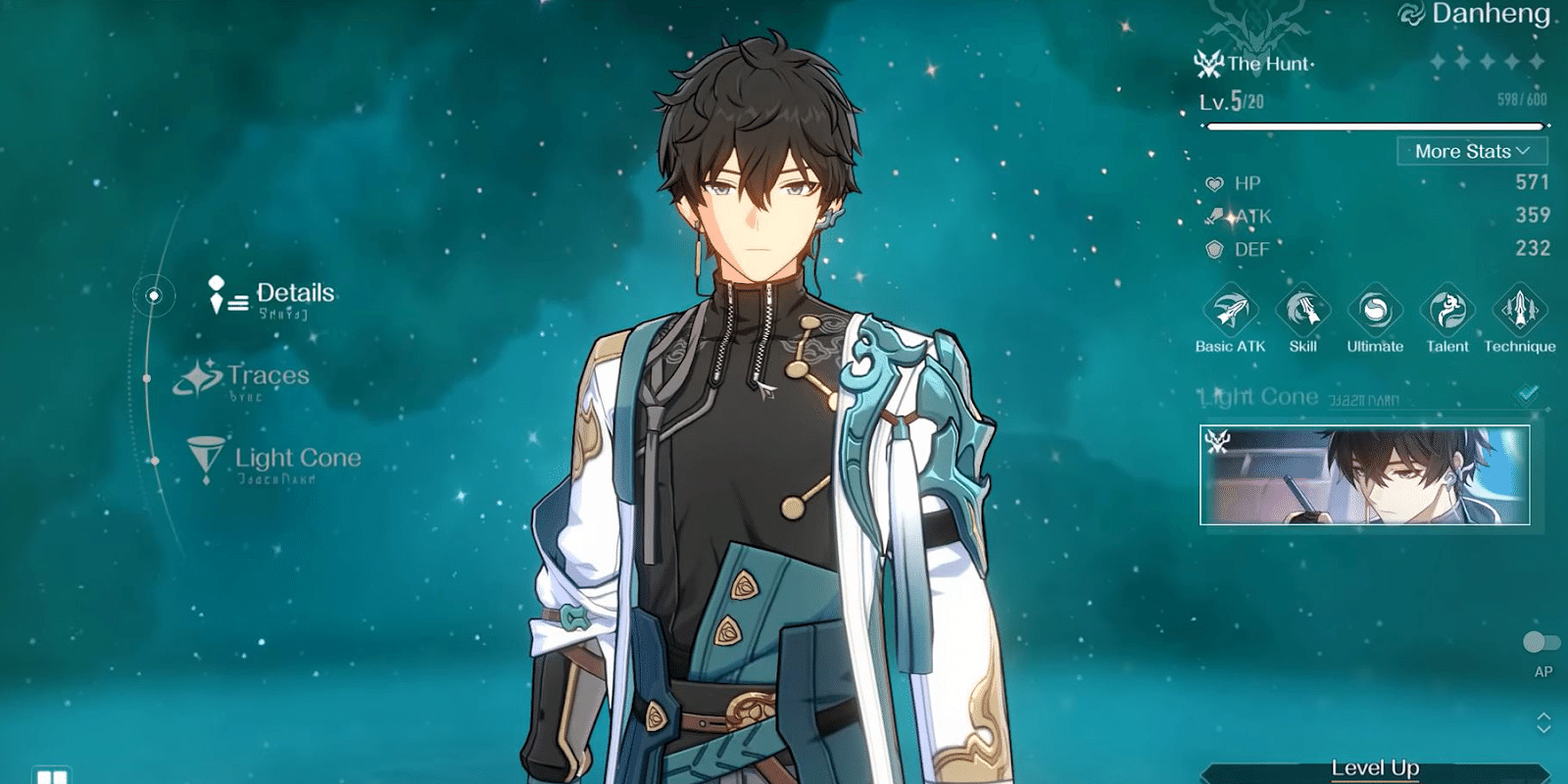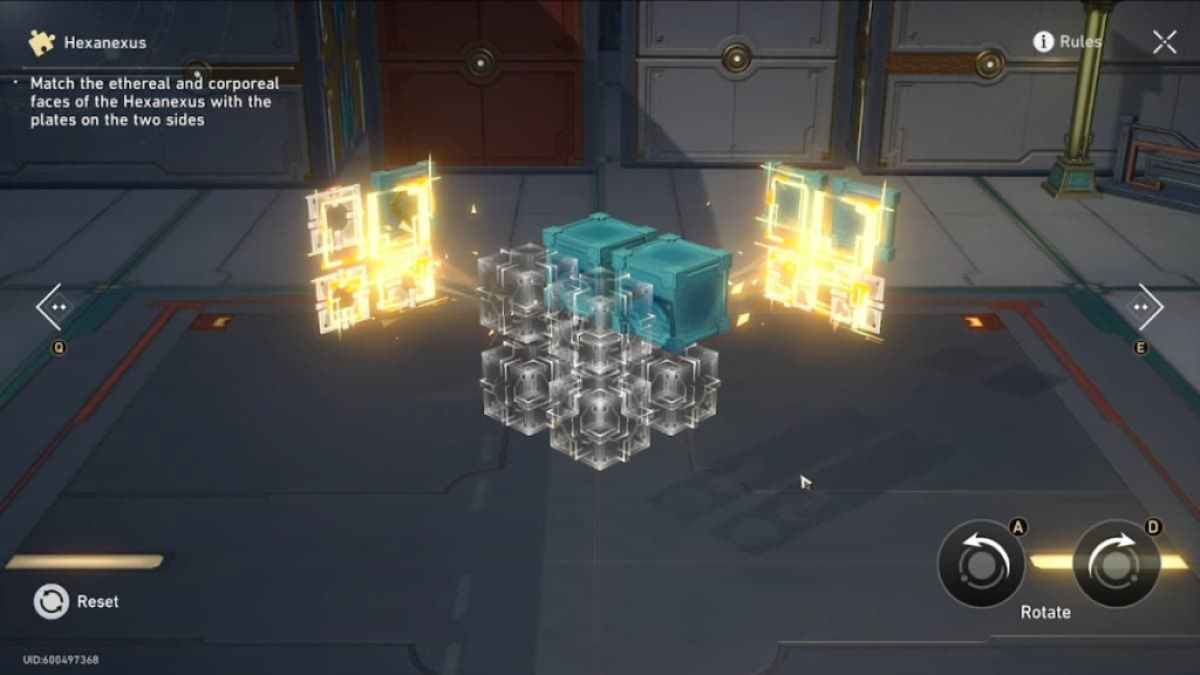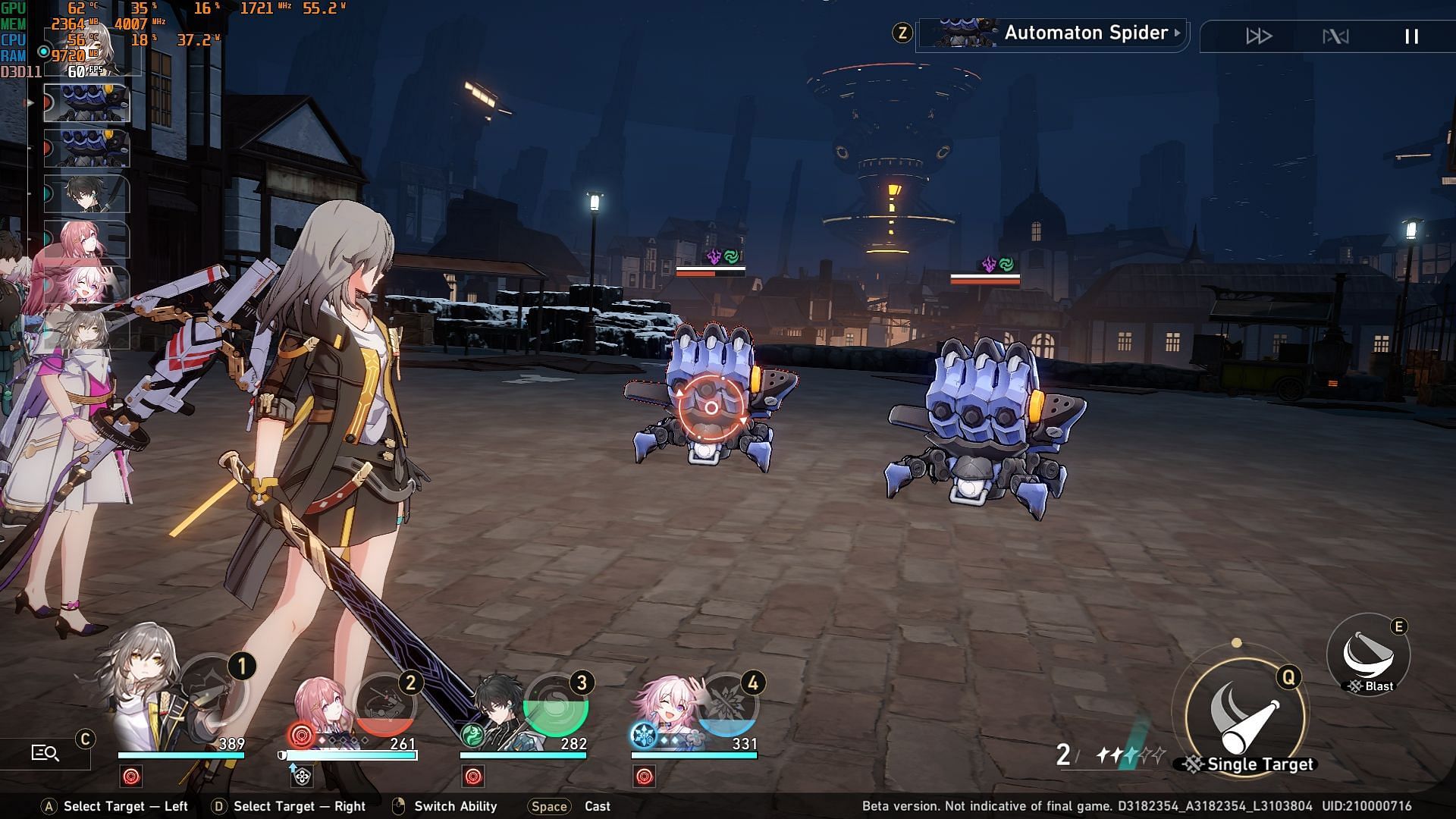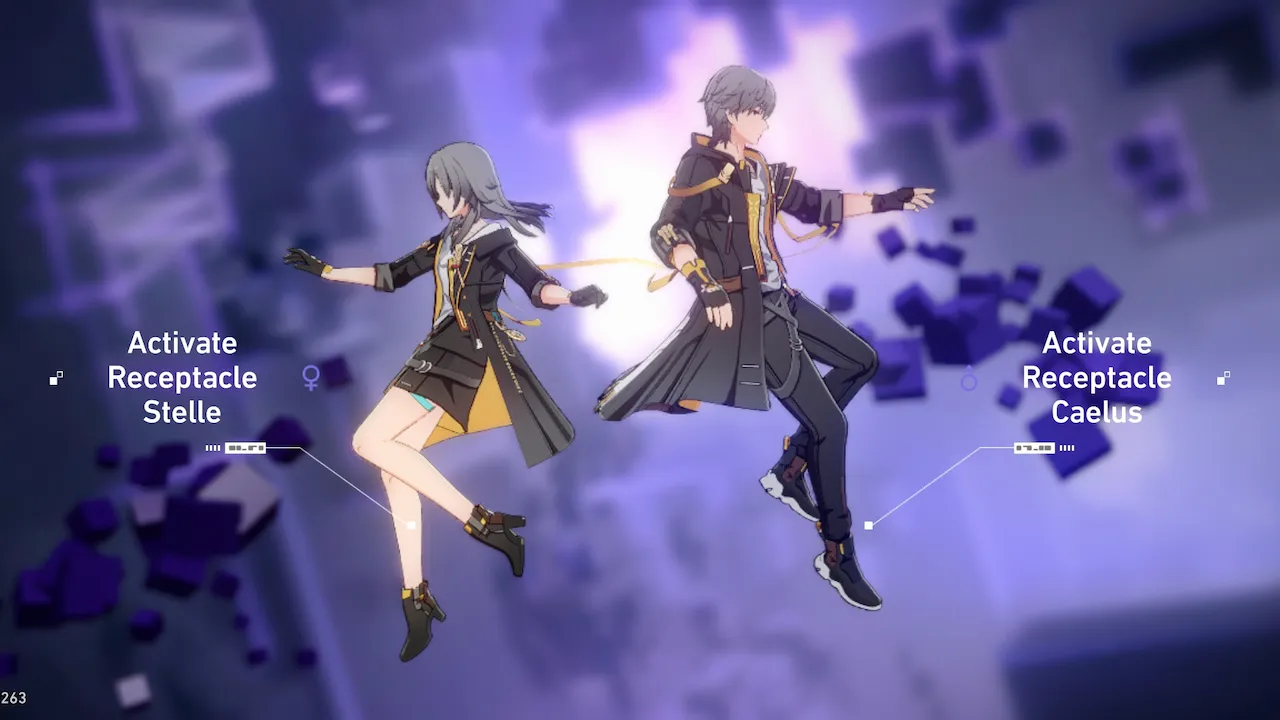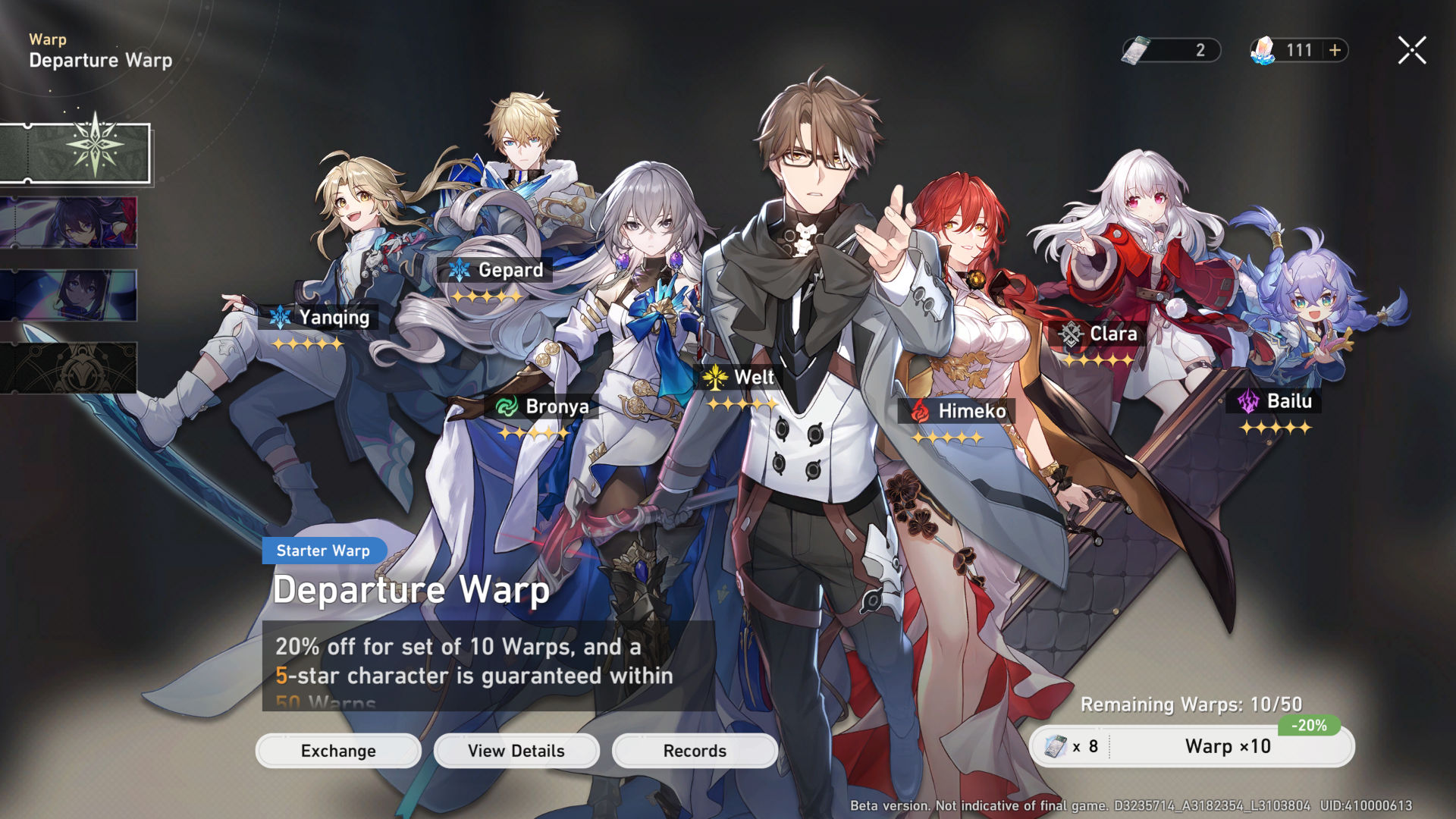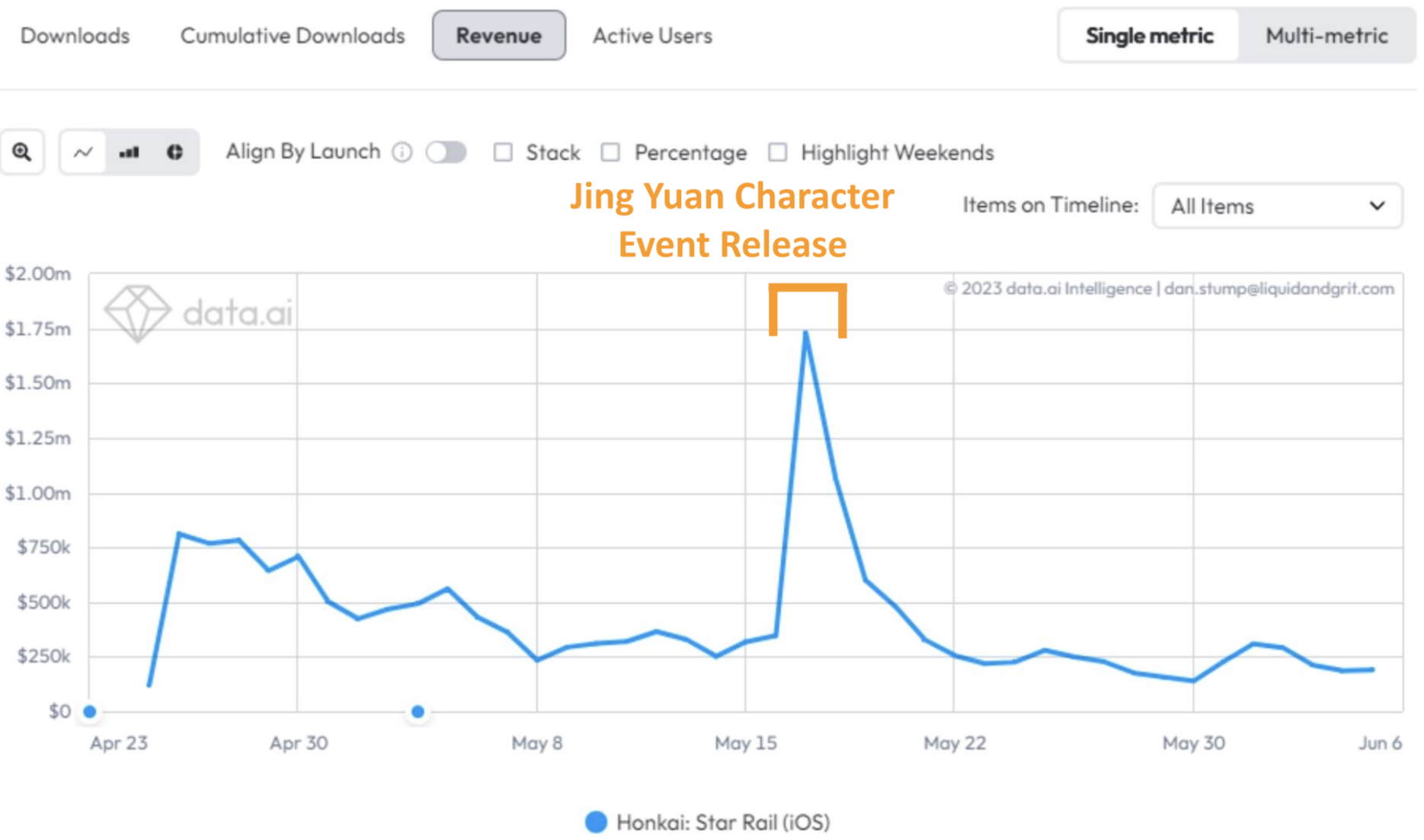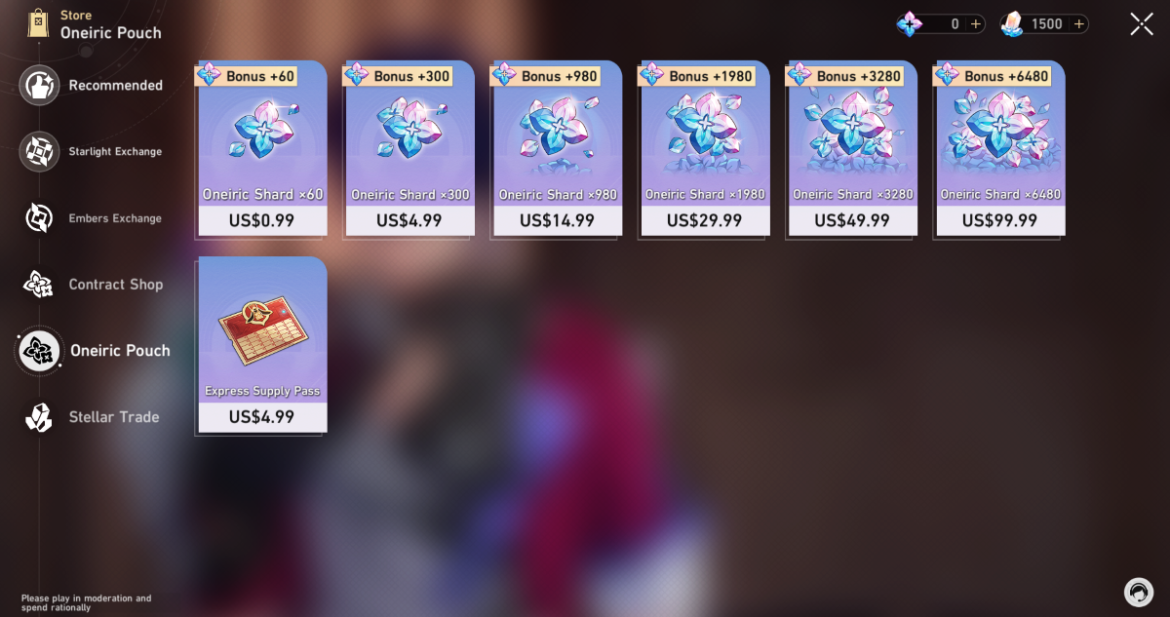Honkai: Star Rail is a turn-based RPG with gacha mechanics released on PC and mobile by HoYoverse on April 26, 2023. The mobile app brought in more than 15M downloads and over $132M in revenue worldwide within its first month.
Honkai: Star Rail capitalizes on Genshin Impact’s success while offering a fundamentally different experience that targets mobile players. As a spiritual successor to Honkai 3rd Impact and the incredibly popular Genshin Impact, Honkai: Star Rail includes a few reimagined recurring characters but otherwise exists in a completely new universe with a sci-fi-themed storyline.
The combat system is the biggest departure from previous HoYoverse games. Honkai: Star Rail uses turn-based combat rather than 3D action, which makes the app easier to play on mobile. In a turn-based combat system, mobile players don’t have to worry about a moment of lag or a missed button press ruining an important fight.
The combat is also simple enough to allow for an auto-battle mode that completes most fights automatically. This auto-battle mode helps the app appeal to a wider audience than the action-strategy combat of Genshin Impact.
The first-time user experience is fast-paced and immerses players in the story quickly. The game has an eye-catching art style, a well-written storyline, and thorough worldbuilding, all of which closely follow the Genshin Impact blueprint. Audiences have come to expect deep lore and worldbuilding from HoYoverse, so the game rewards attentive players with easter eggs, hidden dialogue options, and running jokes.
Players don’t have to participate in the gacha system to finish or enjoy the game, but it does enable more diverse playstyles. The gacha system is nearly identical to Genshin Impact’s, complete with exclusive character events that have already proven quite lucrative for Honkai: Star Rail.
Along with offering a free battle pass every season, this optional gacha approach supports HoYoverse’s strategy of cultivating popularity by offering a strong, free experience for players.
Like Genshin Impact, Honkai: Star Rail lets players maintain their accounts across multiple platforms. Cross-platform games are a major mobile trend that allows players to engage throughout the day, then keep playing at home on systems with better graphics and more accessible control schemes.
Game Basics
In Honkai: Star Rail, players ride an interstellar train through space with a diverse cast of characters to explore worlds and battle enemies. The worlds that players visit are expansive, but the game itself is not strictly open world because players have to load into certain locations. Honkai: Star Rail relies less on free exploration and more on dungeon-crawl dynamics than its predecessor Genshin Impact. However, players are given plenty of NPCs, objects, puzzles, and mini-games to play and interact with.
The battle system is turn-based and relatively simple; each character has a basic attack, an ability, and an ultimate attack. Players build teams of four characters and must consider the characters’ levels, alignments, and elements since each will affect the battle’s outcome. Players can also test out different teams in a simulator that unlocks early in the game.
Compared to its predecessors, Honkai: Star Rail’s combat requires less strategy, particularly in the early game, which may increase its appeal to casual gamers. Honkai: Star Rail also includes an option to speed up battle sequences as well as an auto-battle feature that automatically completes most battles.
Honkai: Star Rail follows in Genshin Impact’s footsteps with a vivid anime art style and engaging characters. The app launched with 27 characters, each with unique abilities, backstories, and personalities. All characters are fully voice acted during gameplay and cutscenes. Because the app’s gacha system depends upon players wanting to collect heroes, weapons, and items, the app’s eye-catching art style and distinct characters are crucial to its monetization.
Fun character interactions and goofy side quests are some of the most cited reasons players enjoy the game. Honkai: Star Rail scatters humorous dialogue and side quest options throughout the game, making the characters both relatable and meme worthy. For instance, there’s an achievement that players can earn by inspecting trash cans. Each trash can inspection comes with its own flavor text. As players inspect more trash cans, the main character becomes obsessed with dumpster diving, to the point that other characters remark on it. One of the achievement’s rewards is a profile picture featuring a trash can.
Hidden jokes and easter eggs have helped create word-of-mouth marketing. Players have hunted down and compiled lists of achievements, references, and dialogue options hidden throughout the game. This level of intricacy is rare in free-to-play games. Honkai: Star Rail has attracted an audience that wants to deep-dive into its world and lore. By rewarding them with jokes and references to everything from The Matrix to Pokémon to Citizen Kane, and even Rickrolling players through lore text, the app encourages players to engage deeply and share their experiences.
First-Time User Experience
The app drops players into the story and gameplay right away with very little exposition. An opening cinematic shows a space station being attacked as a woman plays air violin to powerful music.
The tutorial phase is immersive and fast-paced, and lets players learn through play. As soon as the opening scene is over, players begin their first battle. As the fight progresses, players are shown snippets of tutorial text explaining the mechanics.
Players then meet up with a second character and explore a few rooms in the space station, learning how to move and interact with the world as they go via simple tutorial text. This is interspersed with cutscenes and battles, culminating in the player choosing and naming the main character.
Players can also access a tutorial menu with a searchable database if they forget how to perform an action.
For more information on designing first-time user experiences, see our FTUE Toolkit. If you’re not a subscriber to our design toolkits, email Brett Nowak to learn how to subscribe.
Gacha System
Players unlock most characters and weapons through the app’s gacha system. Gacha pulls cost tickets that players earn through gameplay or can buy with in-app currency. Each gacha pull awards a 3-, 4-, or 5-star character or weapon.
The characters and weapons awarded by the gacha system grant access to unique play styles and strategies. For instance, characters of certain alignments can manipulate turn order or give their turn to another character in battle. Alignments also affect what weapons characters can use. Having a diverse roster is crucial in battle since each enemy is weak to a certain element.
By locking some play styles behind the gacha system, Honkai: Star Rail gives players a greater incentive to buy gacha pulls besides just increased power. Although players can complete Honkai: Star Rail using only free characters, it requires some grinding to make up for those characters’ lower power. More importantly, players will miss out on some of the unique gameplay and abilities offered by the app.
Exclusive Characters
Throughout the game, players can try out certain 5-star characters, which gives players a taste of what it’s like to use rare characters. Players can only win these 5-star characters during 6-week events. Though the character may return for another run, there is no guarantee.
The scarcity and fear of missing out created by exclusive events, combined with interesting characters, has been especially lucrative for Honkai: Star Rail. On May 18, 2023, the Jing Yuan character event began and marked the app’s most lucrative day, with $8.7 million in revenue. Players actually crashed the payment system buying premium currency to purchase gacha-pull tickets for the event.
Honkai: Star Rail U.S. iOS Revenue
Currencies and Stamina Systems
Honkai: Star Rail uses an unusually large number of currencies and stamina systems. Including the standard and special gacha-pull tickets, the game has a total of 10 currencies, with more likely to come as new worlds are added in later versions. Although having so many currencies can be confusing, it also makes it harder for players to do the math on conversion rates when evaluating IAPs.
For instance, there is only one currency players can purchase outright without a battle pass or bundle. That premium currency can be traded for Stellar Jade, which is the currency used to buy gacha-pull tickets. Each gacha-pull ticket costs 160 Stellar Jade. If a player wants a 5-star entity, they may need as many as 90 tickets, which comes out to 14.4K Stellar Jade. The premium currency bought in the shop goes for 60–80 units per dollar, depending on how much a player buys at once. Assuming the best conversion rate, players could spend up to $180 to get one 5-star entity.
The most popular option is, instead, to buy a $4.99 time-release currency bundle. Players get about 600 units per dollar, nearly 10 times the conversion rate of buying premium currency outright. The trade-off is that players receive the currency daily for a month. To buy 90 gacha-pull tickets and guarantee players a 5-star entity, they would only spend around $25, but it would take 5 months to receive all the currency.
Players can also use in-game currencies to top-up stamina, which is used to upgrade characters and weapons.Stamina recharges throughout the day, meaning that casual players who only log in occasionally will rarely run out of stamina when they need it. However, more engaged players will either have to use their stamina strategically or pay for more.
Battle Pass
Honkai: Star Rail has 3 battle pass tiers that award players resources as they progress through 50 levels by completing daily, weekly, and season-long missions. Each battle pass season is 45 days long and the first tier is free to all players once unlocked. The second tier is $9.99 and comes with extra resources and a choice of 1 of 7 exclusive 4-star weapons. The third tier is $19.99 and offers a few more resources plus the ability to skip the first 10 levels of the battle pass and reap the rewards instantly.
Although the third tier is generally seen as a poor value by players, it likely exists to make the second tier look more appealing. The second-tier battle pass is the third most popular IAP in the app.
Creating a rewarding experience for free and paid players alike has been crucial to the meteoric success of both Genshin Impact and Honkai: Star Rail. Although free battle pass tiers are not always present in contemporary RPGs, free battle passes help sustain engagement from non-paying players, which supports a healthy player community and creates the potential to convert non-paying players into paying players.

